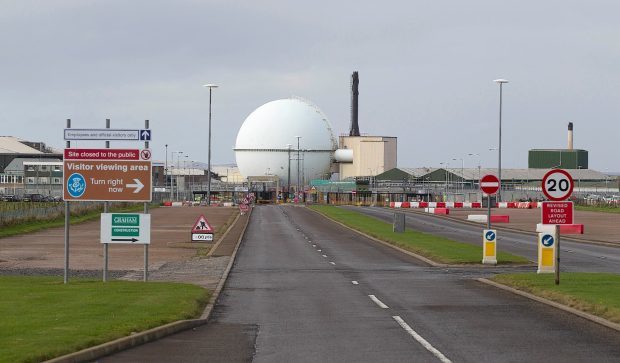It is quite a reaction. Birds of prey are being used to stop gulls nesting at the Dounreay nuclear power complex in Caithness.
The site near Thurso has had problems in previous years with gulls swooping down aggressively on staff who inadvertently walk too close to nests.
A falconer from Norfolk is working with a zoologist on the gull-scaring project.
A Harris hawk and peregrine falcon are among the raptors being used to frighten off the birds.
“Falcons and hawks are being used around the site to deter gulls from nesting this spring,” said a spokesman for Dounreay’s operators DSRL.
“In previous years there has been an issue with aggressive gulls during the nesting period, resulting in health and safety concerns for on-site personnel.
“NBC Bird Solutions is a national bird management consultancy that deal with deterring native bird species that come into conflict with commercial operations. The company own a large selection of birds of prey and breed their own birds at their brand centre in Norfolk.
“The birds of prey are used all over the UK at places as diverse as football stadiums, airports development sites and harbours.”
Andy Higgins is an experienced falconer and Jamie Sneddon is a zoology graduate who has been trained by the company as a falconer and wildlife technician, mentored by Andy.
Andy, a life-long falconer said: “Having been brought up with birds of prey all my life I was fortunate enough to be able to turn this passion into a career in my early 20s”.
There are five birds of prey on site – Tyrie and Gin, Harris Hawks; Mr Mojo, a peregrine falcon; Skye, a hybrid peregrine falcon; and Esther a ten month old hybrid gyrfalcon. Each bird is flown several times per day for anything up to half an hour to deter the gulls.
“The falcons fly high in the sky to provide an aerial threat which all the gulls on site will be aware of,” added Andy.
“The hawks are more of a stealth bird which deters the birds over a smaller area. We are flying this combination of birds to maximise their impact on the site.”
Doug McGeachin, Deputy Environment Manager, said: “These deterrent measures have successfully made the site a less attractive prospect for the birds that are seeking out nesting sites”.
